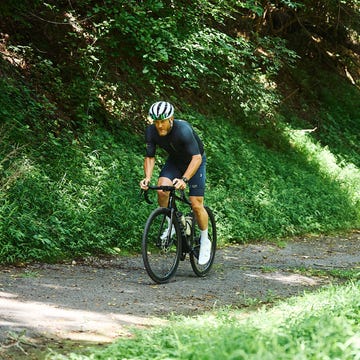- A study of more than 300 individuals found a link between those who had more than the recommended amount of added sugar per day and increased aging at the cellular level.
- Experts point out that sugar is still a solid fuel source for endurance cyclists and offer advice on intake.
There’s a reason sugar has been called “the new smoking,” similar to too much sitting. The sweet stuff has been linked to a number of health issues, from cardiovascular problems to potentially higher cancer risk. Now, a study in JAMA Network Open suggests there’s another downside to add to that list: faster aging.
Researchers analyzed food records from 342 women and used saliva samples to determine the effect of those food choices on their cellular health. Specifically, they looked at a mathematical model called an “epigenetic clock,” which uses DNA measurements to predict age down to a cellular level.
According to the study findings, those having a younger epigenetic age tended to eat diets high in vitamins and minerals and low in added sugar. But sugar had an effect even when people followed a healthy diet. Researchers found that each gram of added sugar above the recommended daily amount—about 200 calories for a 2,000-calorie diet, which equals about 12 teaspoon—was associated with an increase in epigenetic age.
The reasons for this link are not yet known, but may come from the way sugar raises inflammation in the body and also causes oxidative stress, according to Dorothy Chiu, Ph.D., study author and researcher at the University of California San Francisco Osher Center for Integrative Health.
“Also, excess intakes of sugar turn into fat and can result in adverse effects on the liver, and consuming sugar-dense foods can displace consumption of other more nutrient-dense foods,” she told Bicycling. “This results in a bit of a double whammy epigenetically on the body because then we lose out on the antioxidant, anti-inflammatory, and pro-epigenetic properties of nutrients like vitamins, minerals, and healthy fats.”
This effect isn’t just for older adults by the way, Chiu said. Younger people can have accelerated aging as well, but time may be more on their side considering they can change their eating patterns and choices, and those can help pivot toward slower aging, she said.
But what about athletes, like cyclists, who use sugary gels and other boosters to keep from bonking? Although that didn’t factor into the research, Chiu said that intense exercise may have a protective effect that allows you to consume a higher level of added sugar.
“Exercise has a pro-epigenetic effect that it may counteract added sugar to some degree,” she added. “That’s because you would burn that sugar for energy before it can have a negative effect in the body.”
An important note, however, is that all sugars are not equal, according to dietitian Cara Harbstreet, R.D., of Street Smart Nutrition. She told Bicycling that some types are absorbed through different routes in the small intestine.
“A combination of glucose and fructose might be more effective for performance,” she said. “This is usually also better tolerated with less likelihood of cramping, slowed motility, or otherwise uncomfortable digestive issues during activity.”
Also, added sugars can add to daily carbohydrate amounts, and that’s still the preferred fuel source for endurance athletes, she said. One helpful strategy for limiting intake would be to have added-sugar products on training days or during races, but to limit them on recovery days.
“The takeaway here is that too much sugar is not a good thing, but neither is too little,” said Harbstreet. “If your goal is to improve performance, feel better on the road or trails, or support recovery for life outside of sport, focus on fueling properly for your activity level without fixating too much on a single nutrient like sugar.”
Elizabeth Millard is a freelance writer focusing on health, wellness, fitness, and food.













